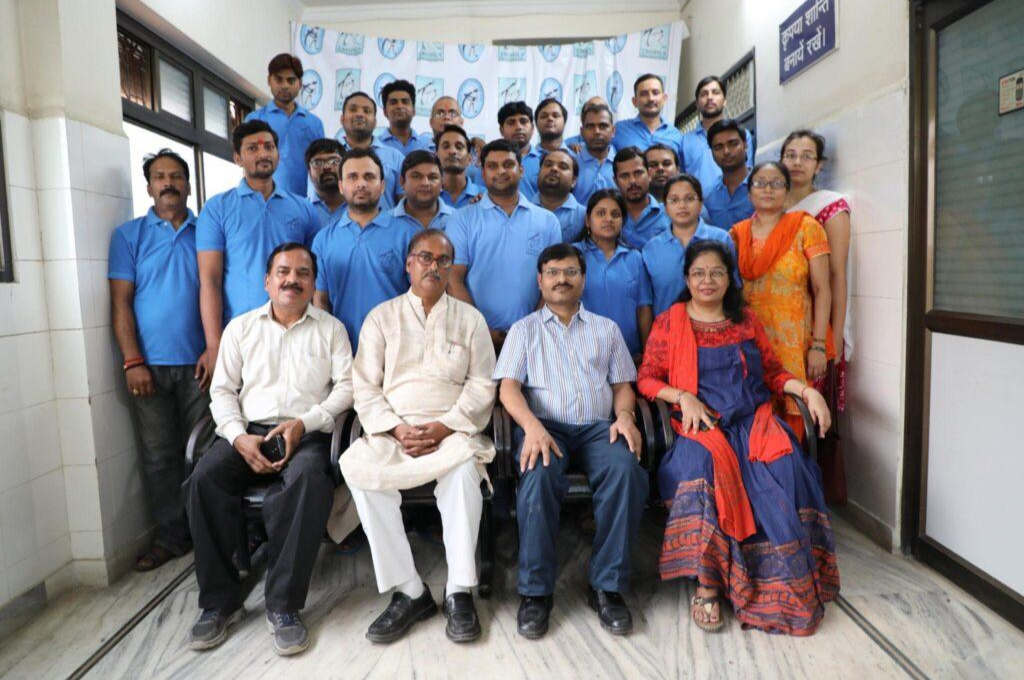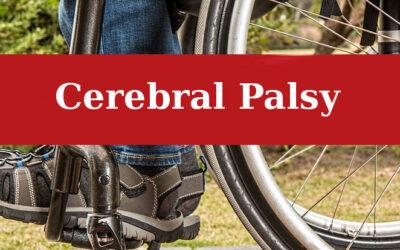What is Dystonic Cerebral Palsy?

Dystonic Cerebral Palsy is a specific type of cerebral palsy characterized by movement disorder involving sustained muscle contractions that result in repetitive, twisting, or abnormal postures. Dystonia in this variety can cause involuntary, slow, and twisting movements in one part of the body or sometimes affect the whole body. Usually, this twisting movement aggravates anxiety & activities.
Symptoms
In dystonic Cerebral Palsy, the patient will have an abnormal involuntary movement that will cause repetitive, twisting, or abnormal postures. The signs and symptoms of Dystonic Cerebral Palsy can vary according to their severity in specific individuals. It usually starts manifesting at a very early age in infancy. It is essential to understand these signs for early identification and intervention.
1. Involuntary Movements
Children with dystonic cerebral palsy will have involuntary movements, which include twisting, writhing, or repetitive motions in one or more body parts. Example: Uncontrollable twisting of the lower or upper limb and rarely neck.
2. Abnormal Postures
Dystonia often leads to the adoption of abnormal and sustained postures. These postures can affect the limbs, neck, or torso. Example: Prolonged and involuntary twisting of the back or unusual positioning of the limbs.
3. Difficulty with Fine Motor Skills
Dystonia can also impact fine motor skills, so the child will face difficulty making precise movements. It will include activities such as buttoning a shirt, writing, eating, and handling small objects. Example: Difficulty in grasping and manipulating small objects due to involuntary muscle contractions.
4. Pain and Discomfort
A child with dystonia may develop muscle pain and discomfort due to sustained muscle contractions. Example: Individuals may have neck or radiating pain in the extremities due to abnormal twisting & nerve compression.
5. Delayed Developmental Milestones
Children with Dystonic Cerebral Palsy will experience delays in achieving developmental milestones, such as sitting, crawling, standing, or walking & activities of daily life. For example, walking capability may or may not be achieved in dystonic cerebral palsy. If it is achieved, then it will not be a regular gait pattern.
6. Speech and Communication Challenges
Dystonia also negatively impacts speech and communication, leading to problems in articulation and expressive communication. For example, verbal communication will be difficult. An unknown person may not be able to understand.
7. Co-occurring Motor Disorders
Sometimes, other varieties of tone disorders may co-exist with dystonia and make it mix variety. Example: Tremors, additional muscle stiffness, or athetoid movements may accompany dystonic features.
8. Fatigue and Muscle Weakness
Excessive Abnormal movement in dystonia will cause more energy expenditure that will lead to weakness & fatigue. Example: fatigue after walking in the community.
9. Orthopedic Complications
Abnormal postures and muscle imbalances are persistent for a long duration. They can lead to orthopedic complications, including joint contractures and skeletal deformities—for example, knee flexion & ankle equino-varus deformity.
10. Variability in Symptoms
Symptoms in Dystonic Cerebral Palsy can vary in specific posture & intensity. This variability depends on stress, fatigue, or emotional states. Example: Symptoms may temporarily worsen during periods of heightened emotion or stress.
Types of Dystonia in Cerebral Palsy
Depending upon the area of the body involved, dystonic cerebral palsy can be of different types. Focal Dystonia Involves one specific body part, such as the hands or feet. Segmental Dystonia: Affects two or more adjacent body parts. Example: hemi dystonia, Generalized Dystonia: Involves multiple areas of the body, impacting the whole body, including the leg, arm, trunk & neck.

Diagnosis
Importance of Diagnosis
Diagnosis of dystonic cerebral palsy needs detailed evaluation by a health care specialist. The right diagnosis is essential for developing an effective treatment plan for individual needs. The diagnosis matrix includes a detailed history, examination, gait analysis, etc.
Multidisciplinary Evaluation
Clinical Assessment: An important component of the diagnostic process is a clinical assessment, where healthcare specialists, including neurologists, pediatricians, orthopedic surgeons, and rehabilitation specialists, observe the individual’s motor function, coordination, and posture. It involves analysis of gait pattern, muscle tone, functional capability & abnormality in posture, etc.
Neuroimaging
Magnetic Resonance Imaging (MRI) or Computed Tomography (CT) scans are required to see any anatomical abnormality in the brain. These imaging studies help identify any abnormalities or damage to the brain. It helps in differentiating from other etiology of similar-looking problems. But sometimes you don’t find anything.
Developmental History
Gathering a comprehensive developmental history is an integral part of the assessment. This involves obtaining information about key developmental milestones, such as when the individual achieved motor skills like sitting, crawling, or walking. Comparing developmental milestones to typical timelines helps in identifying delays or abnormalities.
Differential Diagnosis: Rule Out Other Conditions:
The diagnostic process includes ruling out other conditions that may present with similar symptoms. Conditions such as genetic disorders, metabolic disorders, or other neurological conditions must be considered and, if necessary, excluded through additional tests.
Classification of Cerebral Palsy
Once cerebral palsy is identified, healthcare professionals further classify the specific type. In the case of Dystonic Cerebral Palsy, the focus is on recognizing the characteristic dystonic movements and understanding their distribution throughout the body.
Long-Term Monitoring and Assessment
Ongoing Monitoring
Following the initial diagnosis, individuals with Dystonic Cerebral Palsy undergo ongoing monitoring to assess their progress and adjust their treatment plan as needed. Regular assessments help healthcare providers understand how the condition evolves and ensure that interventions remain effective.
Functional Assessment
Assessments extend beyond the clinical realm to functional evaluations. These assessments focus on the individual’s ability to perform daily activities, including self-care, mobility, communication, and social interactions. Functional assessments provide a holistic view of the individual’s capabilities and challenges.
Holistic Approach to Assessment
The diagnosis and assessment process for Dystonic Cerebral Palsy requires a holistic and individualized approach. It involves not only the physical aspects of motor function but also considers the emotional, psychological, and social aspects of the individual’s well-being.
Collaborative Care
Diagnosing and assessing Dystonic Cerebral Palsy involves collaboration among healthcare professionals, therapists, caregivers, and the individual. A team-based approach ensures that all aspects of the condition are thoroughly evaluated, leading to a comprehensive understanding and effective management of the challenges associated with Dystonic Cerebral Palsy. In conclusion, the diagnosis and assessment of Dystonic Cerebral Palsy are multifaceted processes prioritizing accurate identification, classification, and ongoing monitoring. These processes lay the foundation for a personalized and comprehensive care plan that addresses the unique needs of individuals living with Dystonic Cerebral Palsy.

Treatment
Managing Dystonic Cerebral Palsy requires a multidisciplinary approach tailored to the individual’s needs. Our comprehensive treatment options include:
1. Physical Therapy
Physical therapy addresses dystonic movements and improves muscle strength, coordination, and mobility.
2. Medications
Pharmacological interventions to manage dystonia and alleviate associated symptoms. Medications may include those that target abnormal muscle contractions.
3. Assistive Devices
Providing adaptive tools and assistive devices to enhance daily living activities, including mobility aids and devices to support fine motor skills.
4. Orthopedic Interventions
Addressing musculoskeletal issues and preventing complications through surgical interventions when necessary. In pure dystonia, orthopedic surgery has a minimal role. Still, if it is associated with deformity, then they will need surgery to correct the deformity so therapy can be easier for the patient.
5. Speech and Occupational Therapy
Supporting communication skills and addressing challenges in activities of daily living through tailored therapeutic approaches. Oropharyngeal exercises help in the process of deglutition & speech formation. It also prevents the dribbling of saliva. Occupational therapy helps in training in activities of daily life, including toilet training, dressing, eating, etc
6. Emotional and Psychological Support
Understanding the emotional impact of living with Dystonic Cerebral Palsy, we offer counseling services and resources to support individuals and their families.
Understanding Prognosis
Prognosis refers to the predicted course and outcome of a medical condition. In the context of Dystonic Cerebral Palsy, it involves assessing the likely trajectory of the condition over time. Prognosis considers various factors that influence the long-term outlook, including symptoms’ severity, interventions’ effectiveness, and individual response to treatment.
Factors Influencing Prognosis
The severity of Dystonia:
The degree of dystonia, ranging from focal (affecting a specific part of the body) to generalized (impacting multiple areas), significantly influences the prognosis. More severe and widespread dystonia may present greater challenges.
Early Intervention:
Early identification and cerebral palsy diagnosis are crucial in shaping the prognosis. As early as possible, initiating appropriate therapies and treatments can positively impact motor function and overall development.
Comprehensive Management:
The extent to which an individual receives comprehensive and multidisciplinary care, including physical therapy, medications, assistive devices, and emotional support, can contribute to a more favorable long-term outlook.
Orthopedic Complications:
Addressing and managing orthopedic complications, such as joint contractures and skeletal deformities, can impact the prognosis. Surgical interventions may be considered to improve joint mobility and prevent complications.
Individual Resilience and Adaptability:
The individual’s resilience, adaptability, and response to therapies and interventions are unique factors influencing prognosis. Each person’s experience with Dystonic Cerebral Palsy is distinct, and their ability to adapt to challenges varies.




